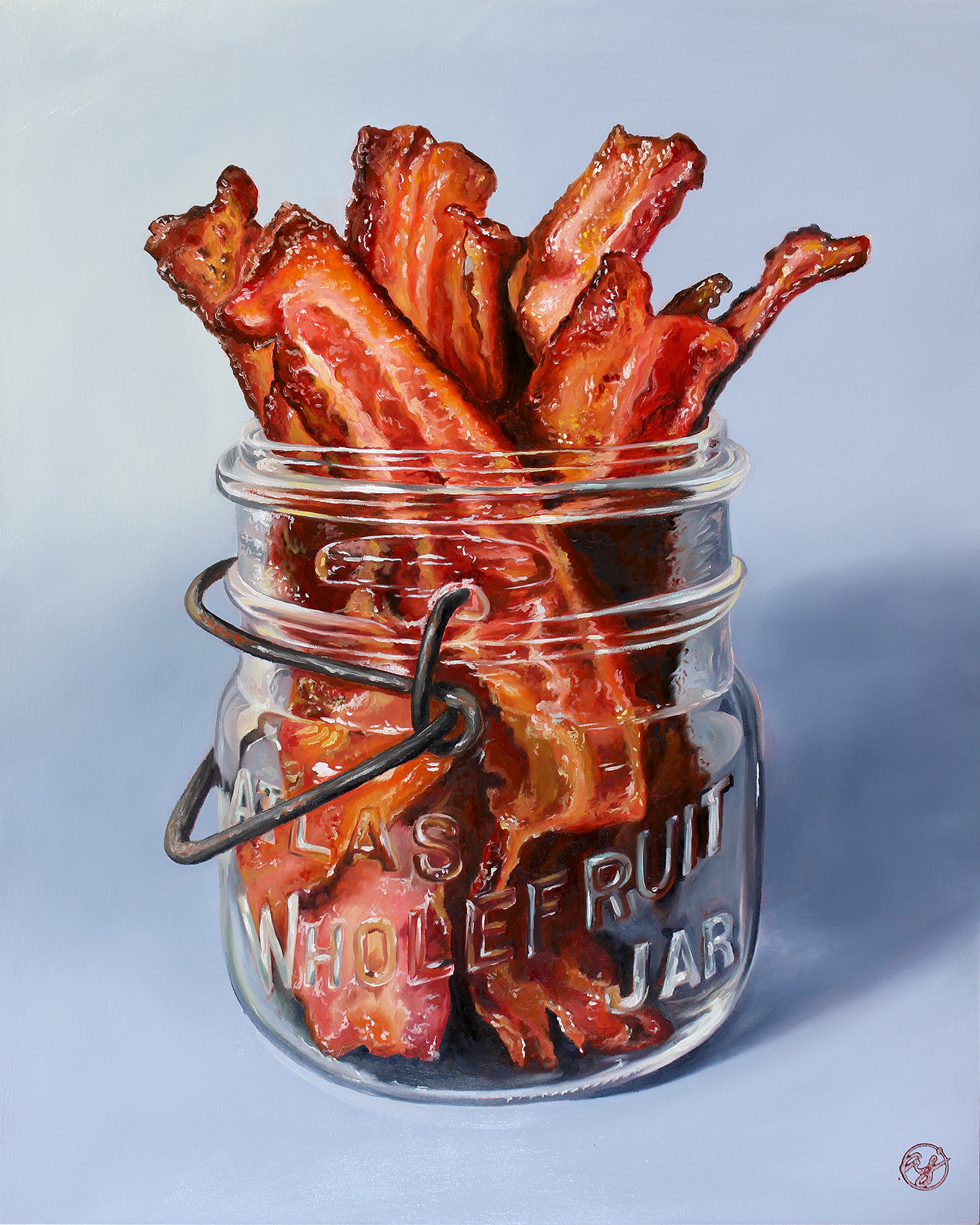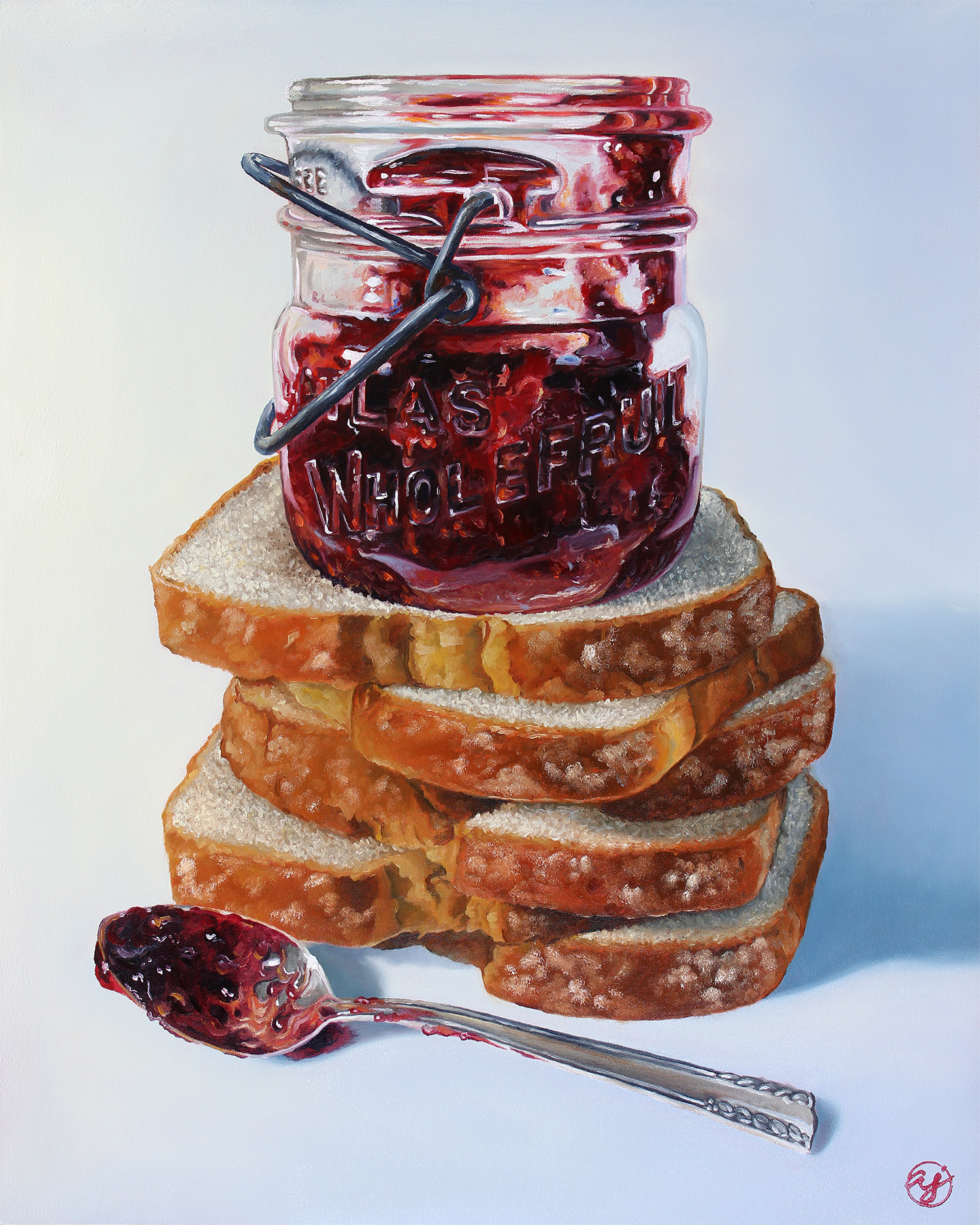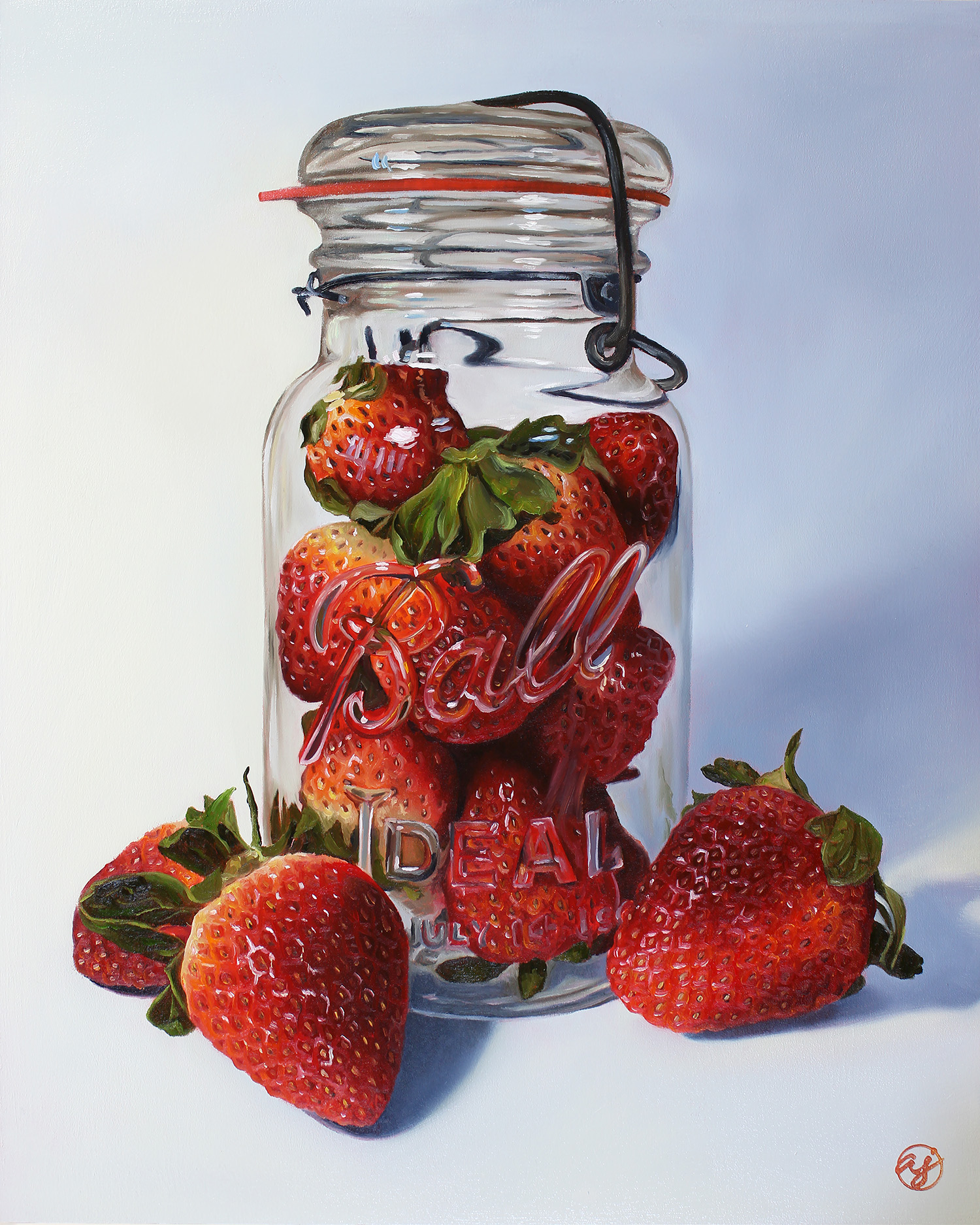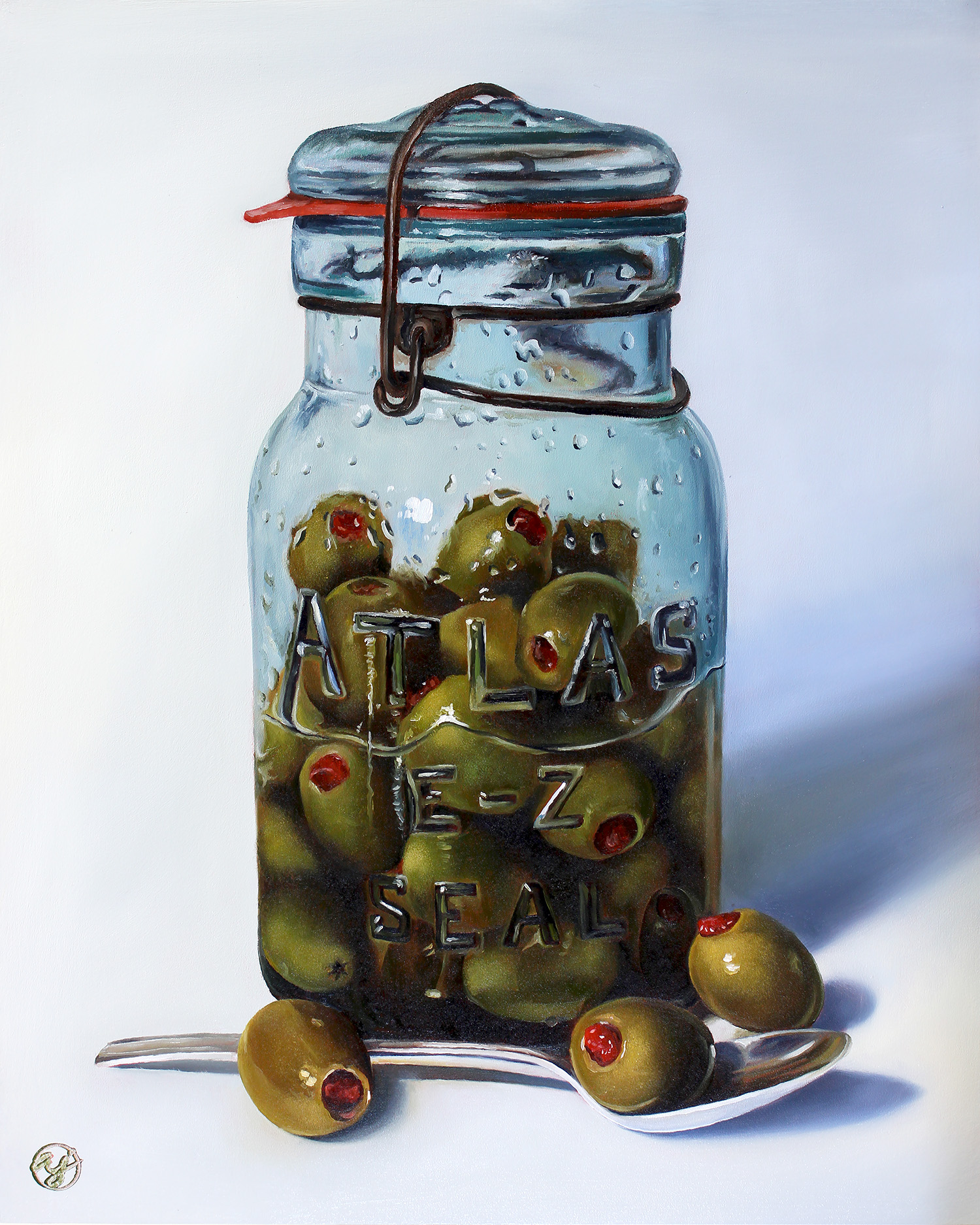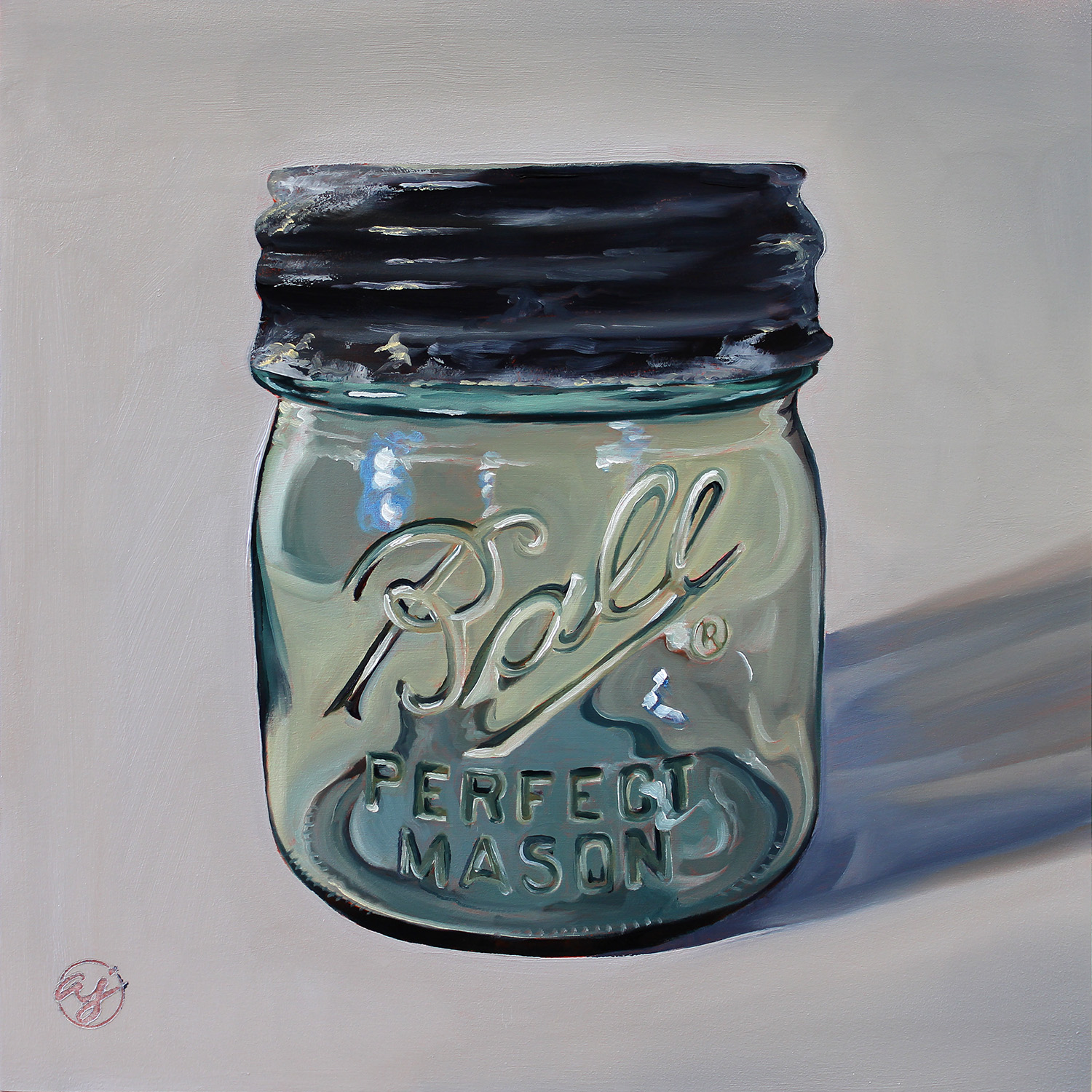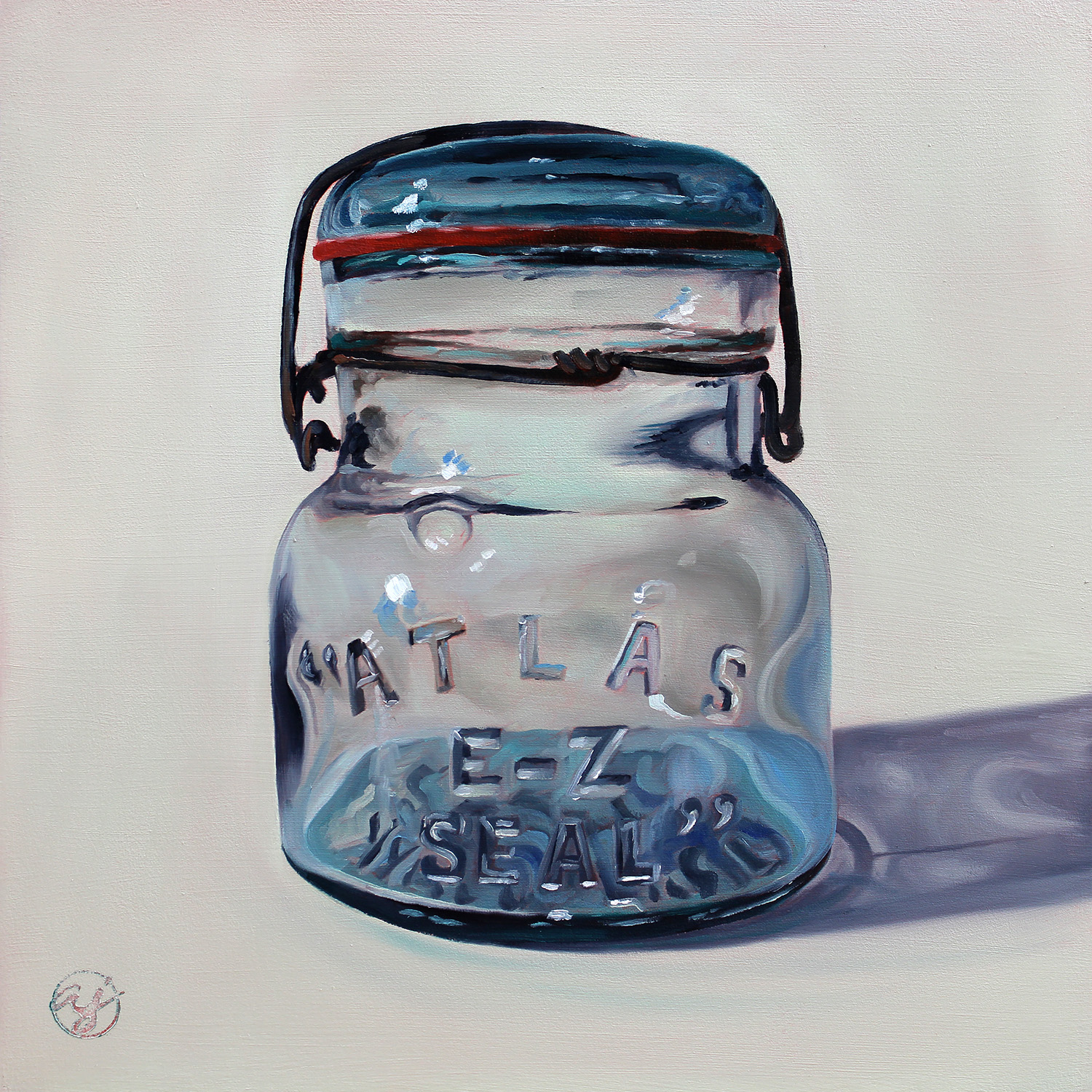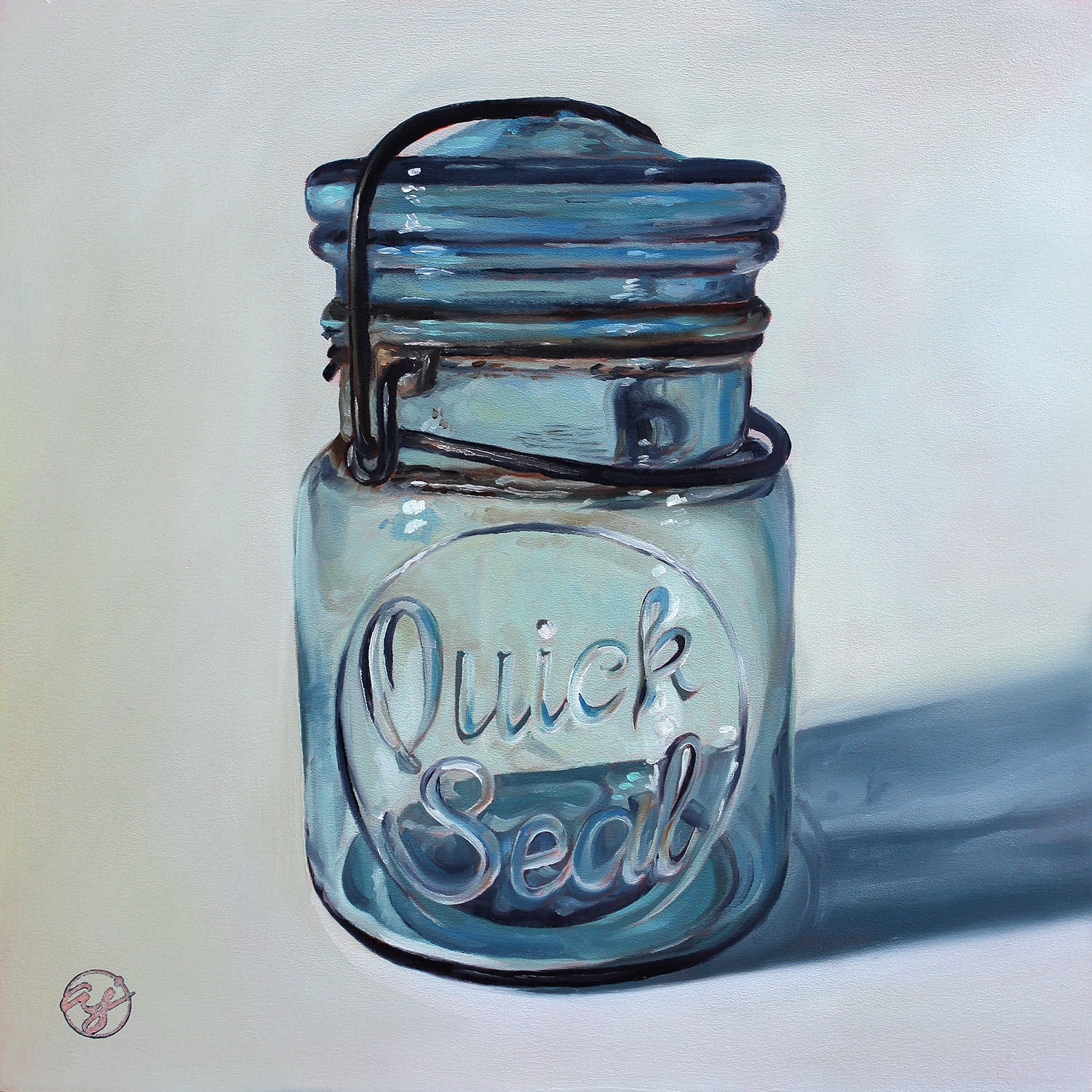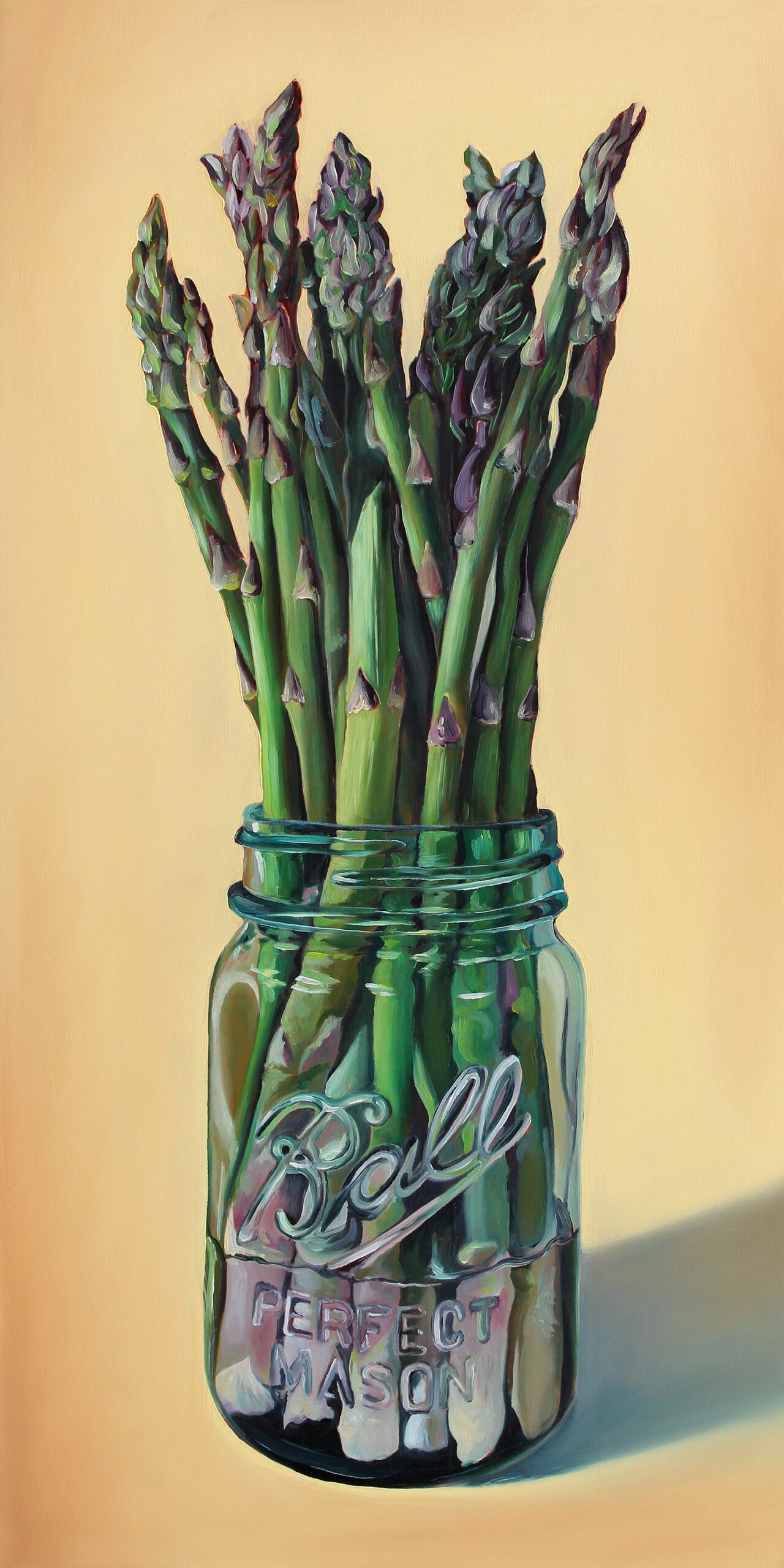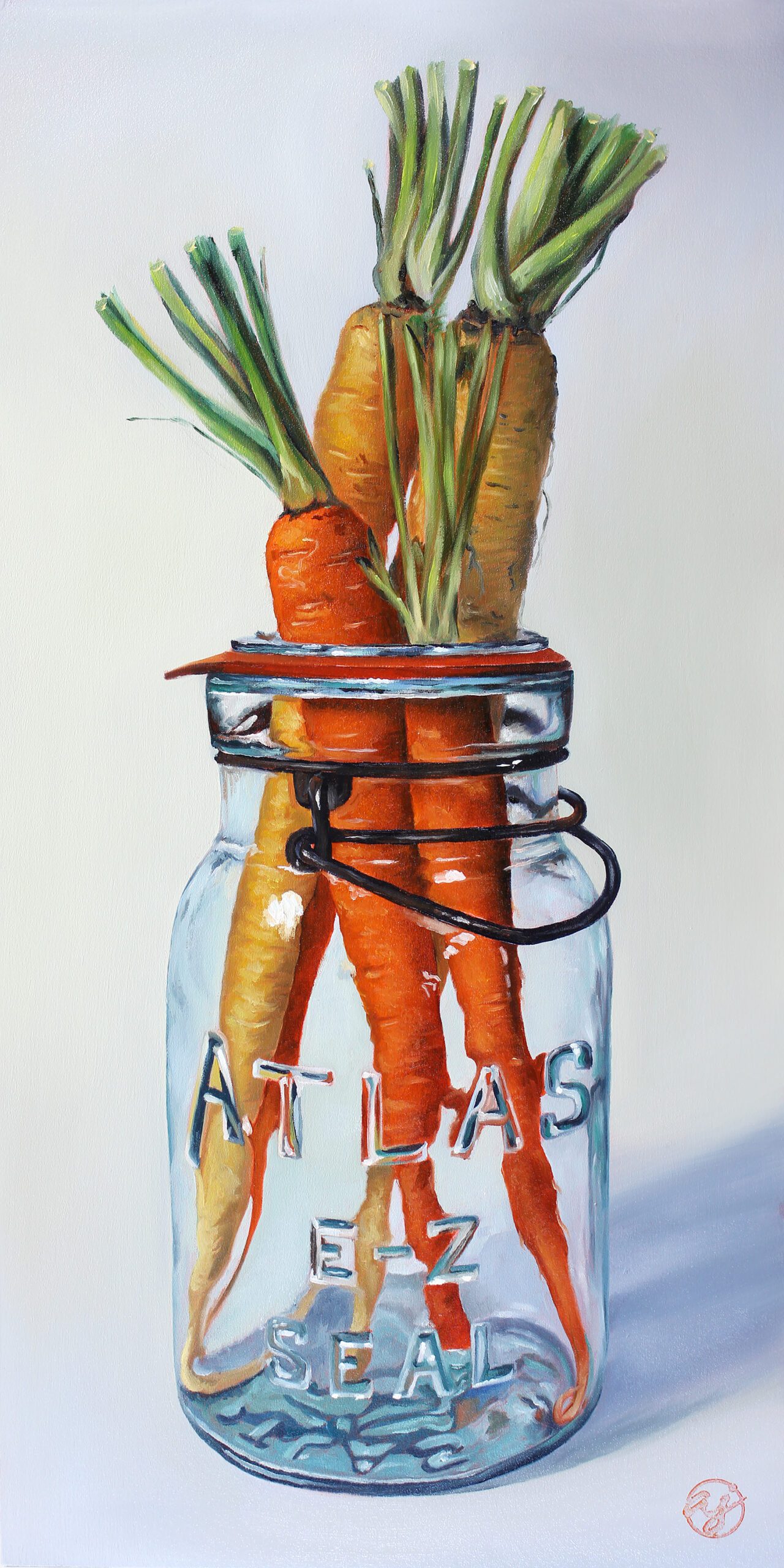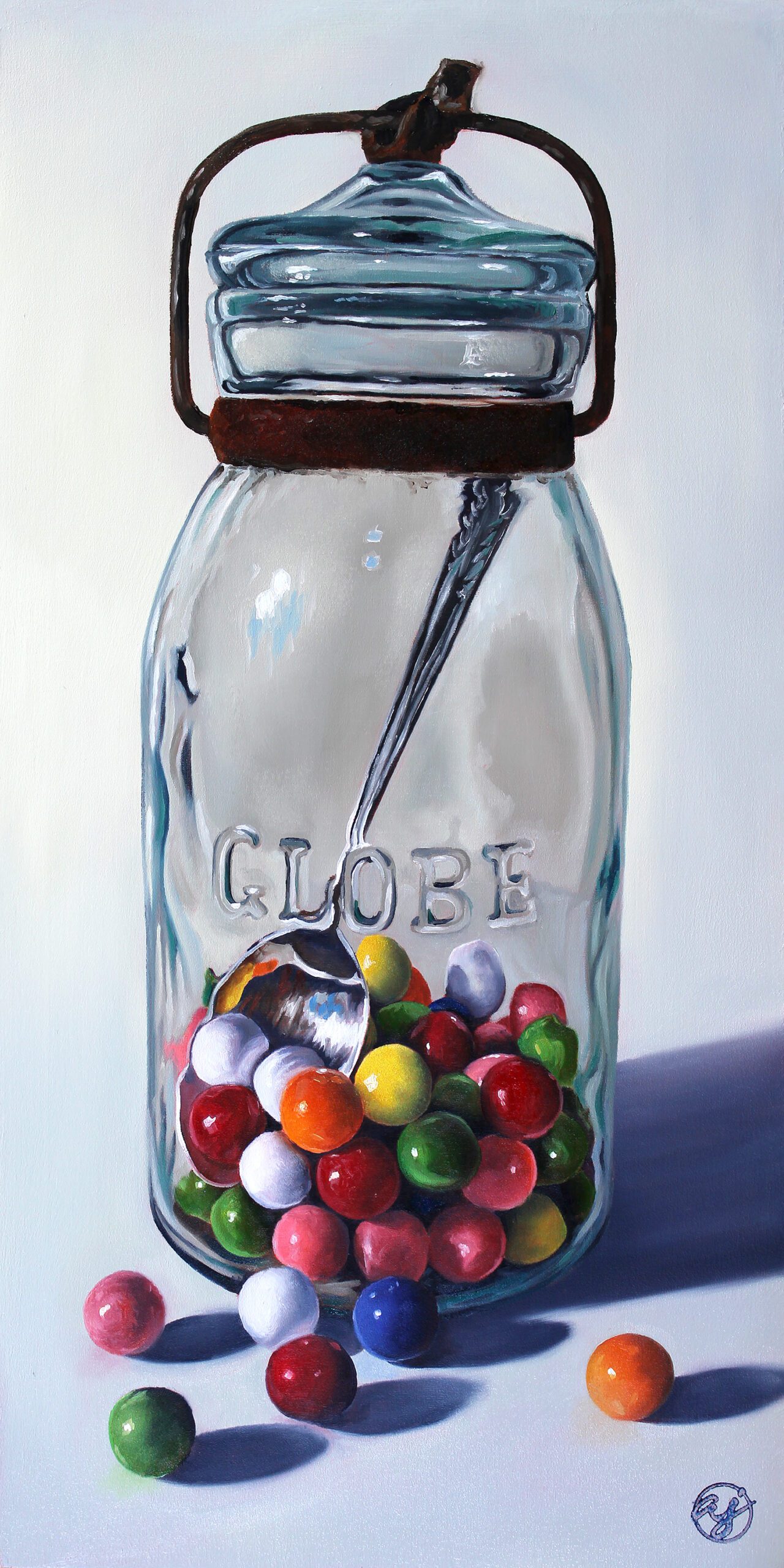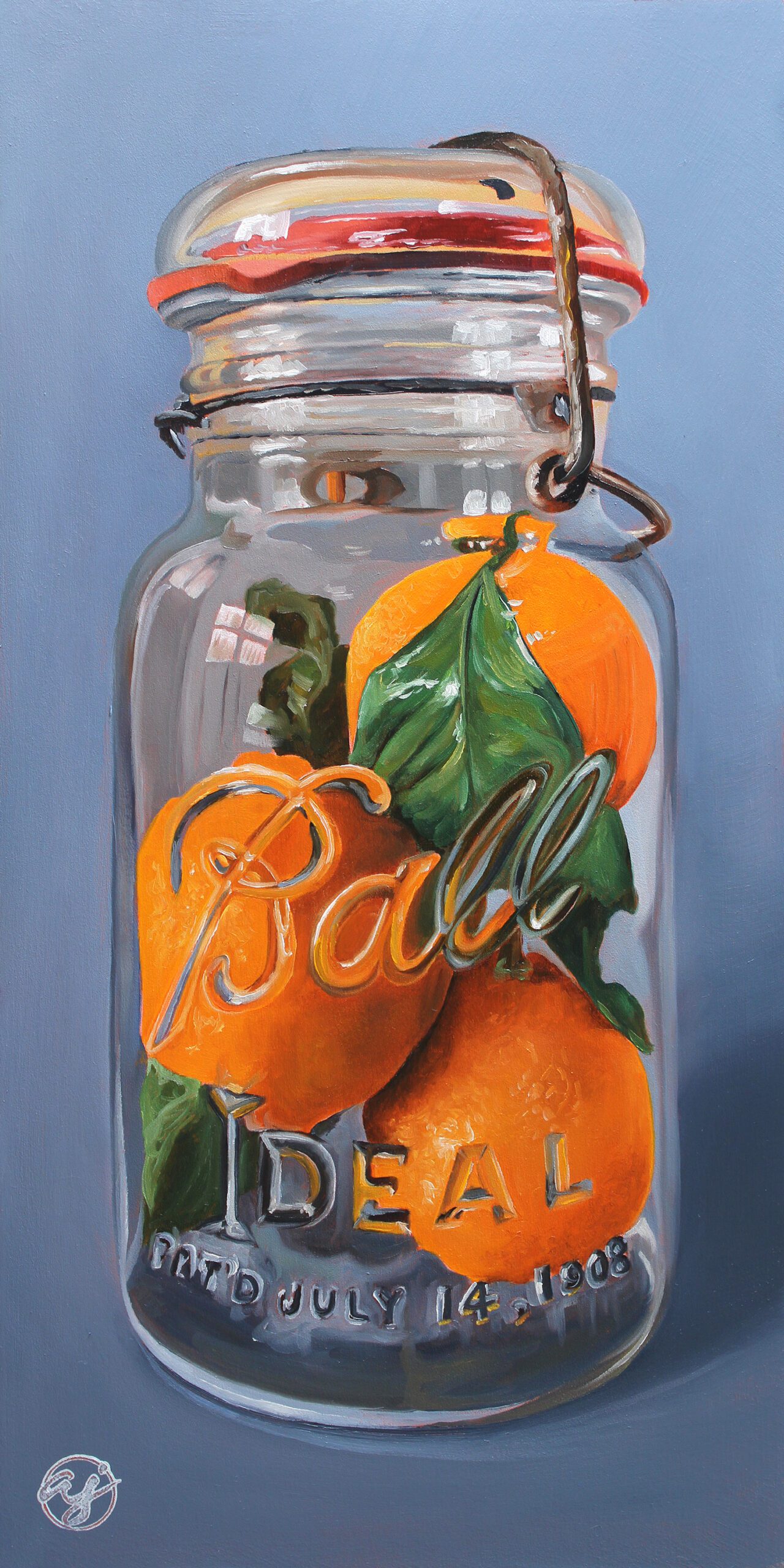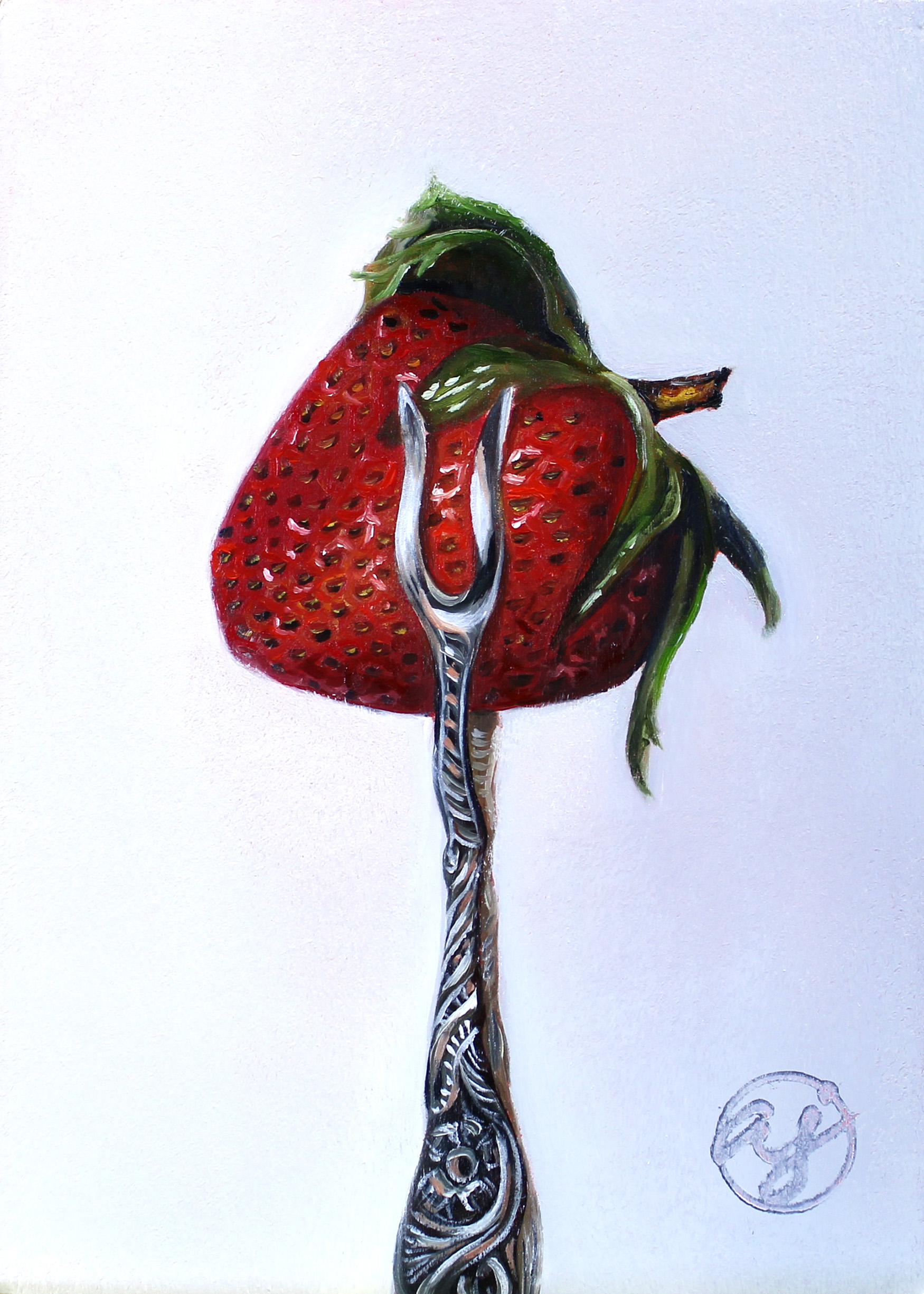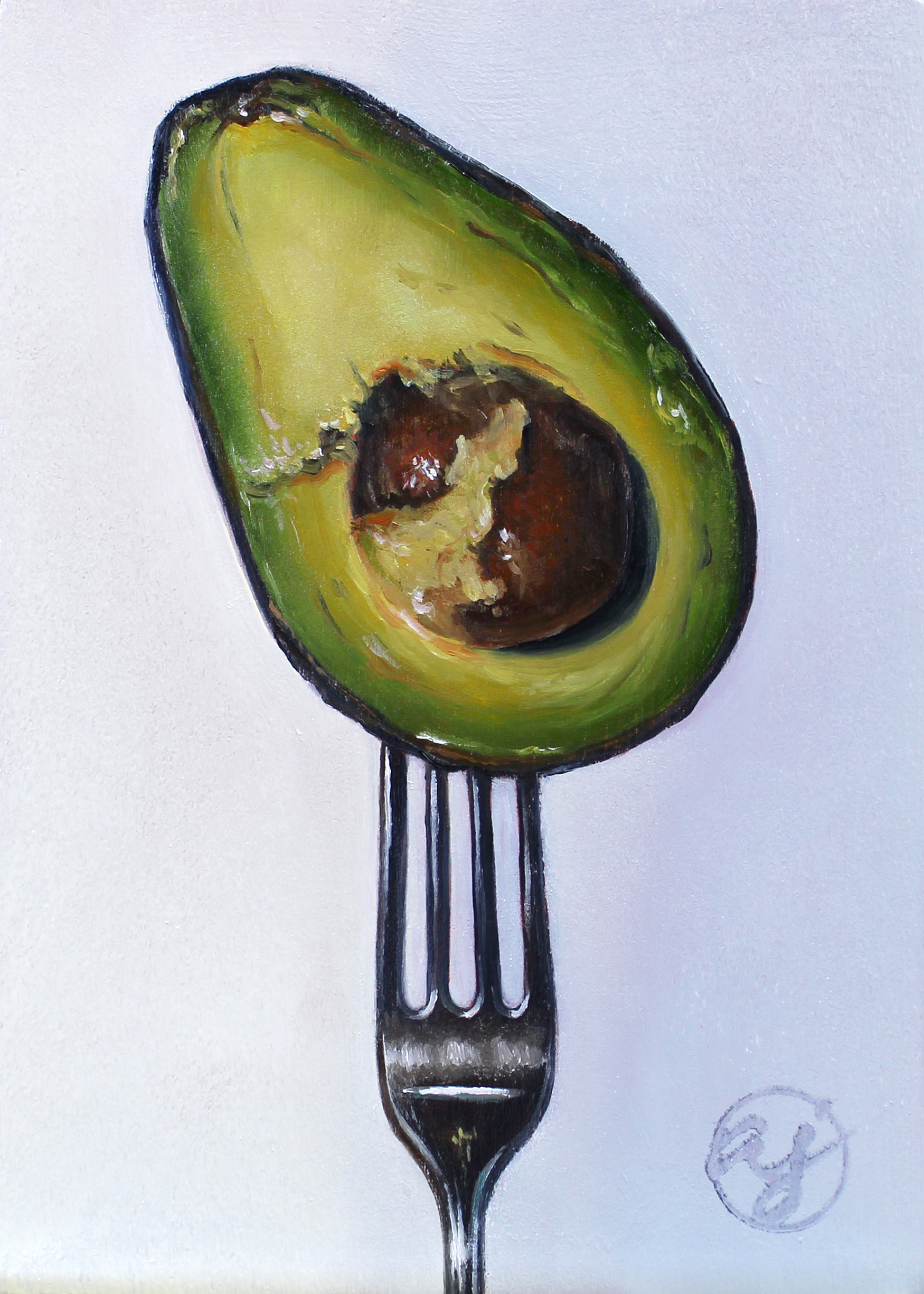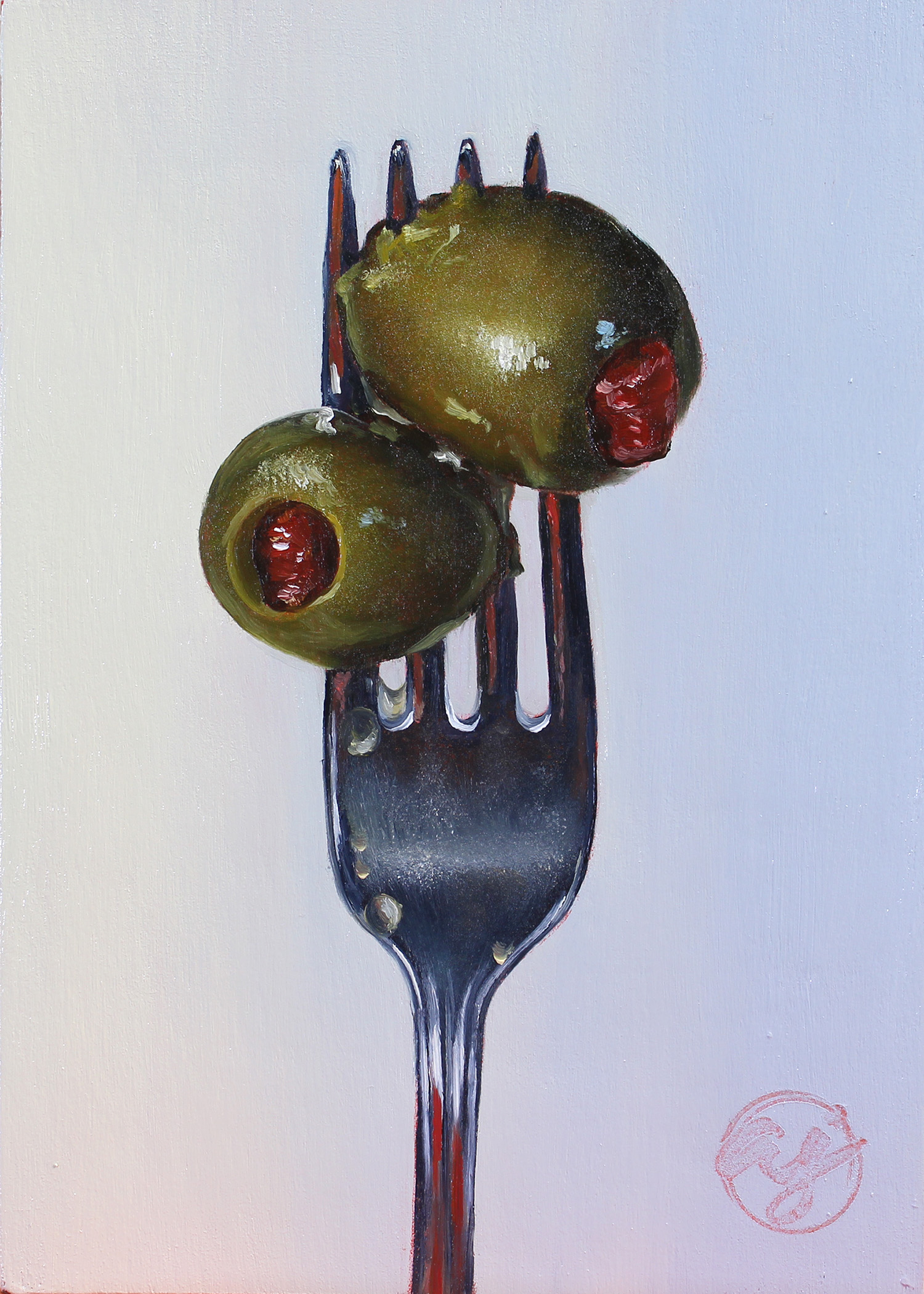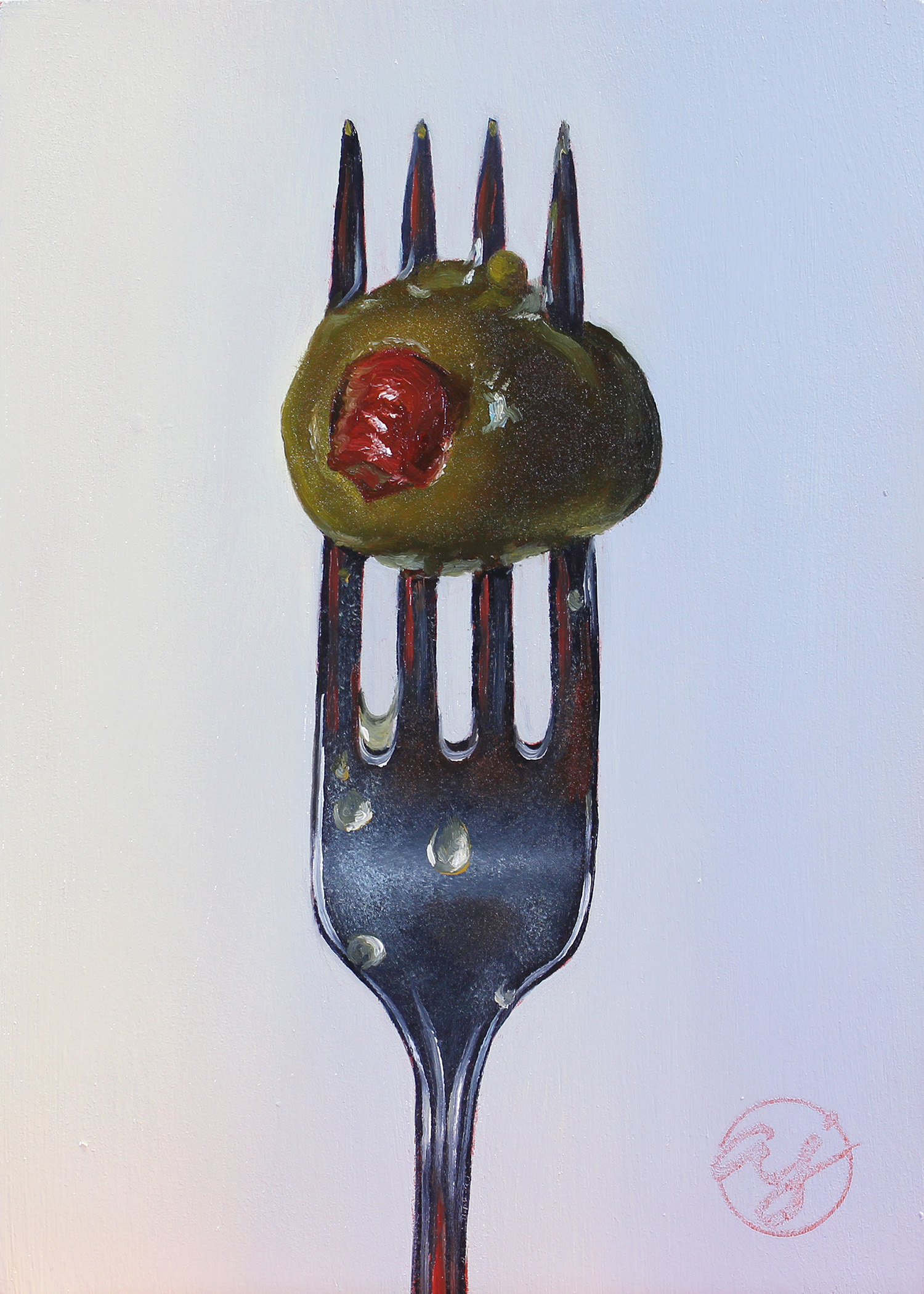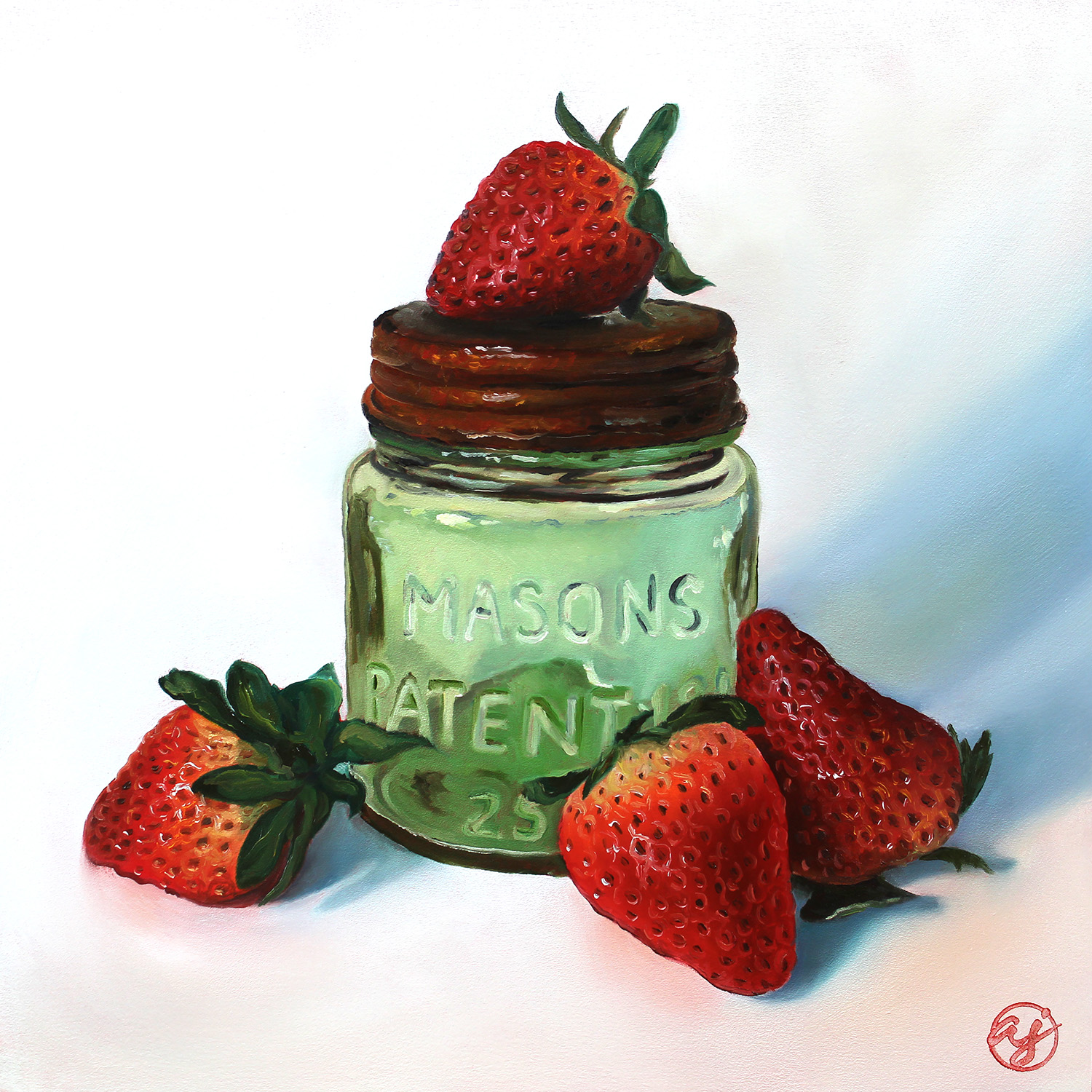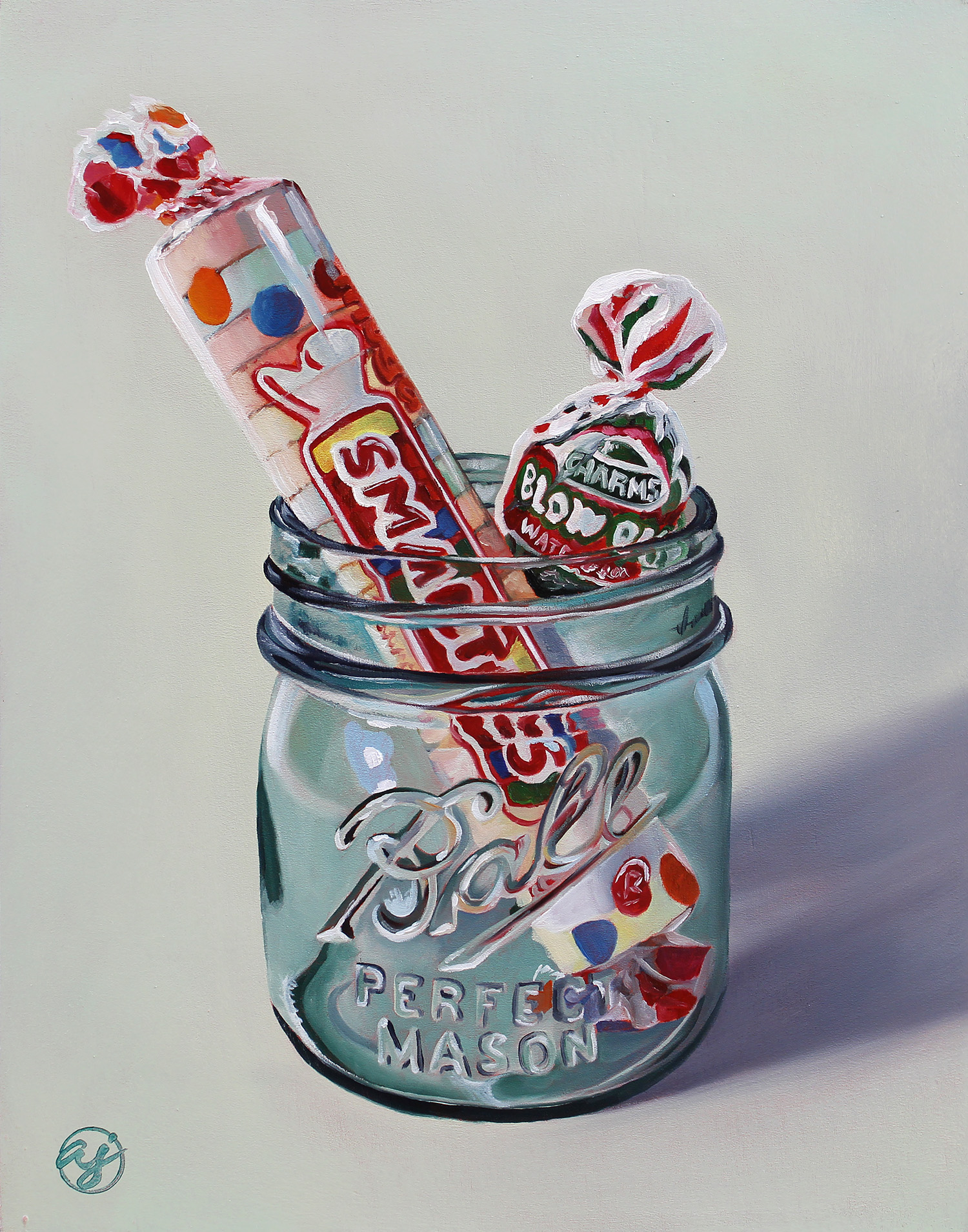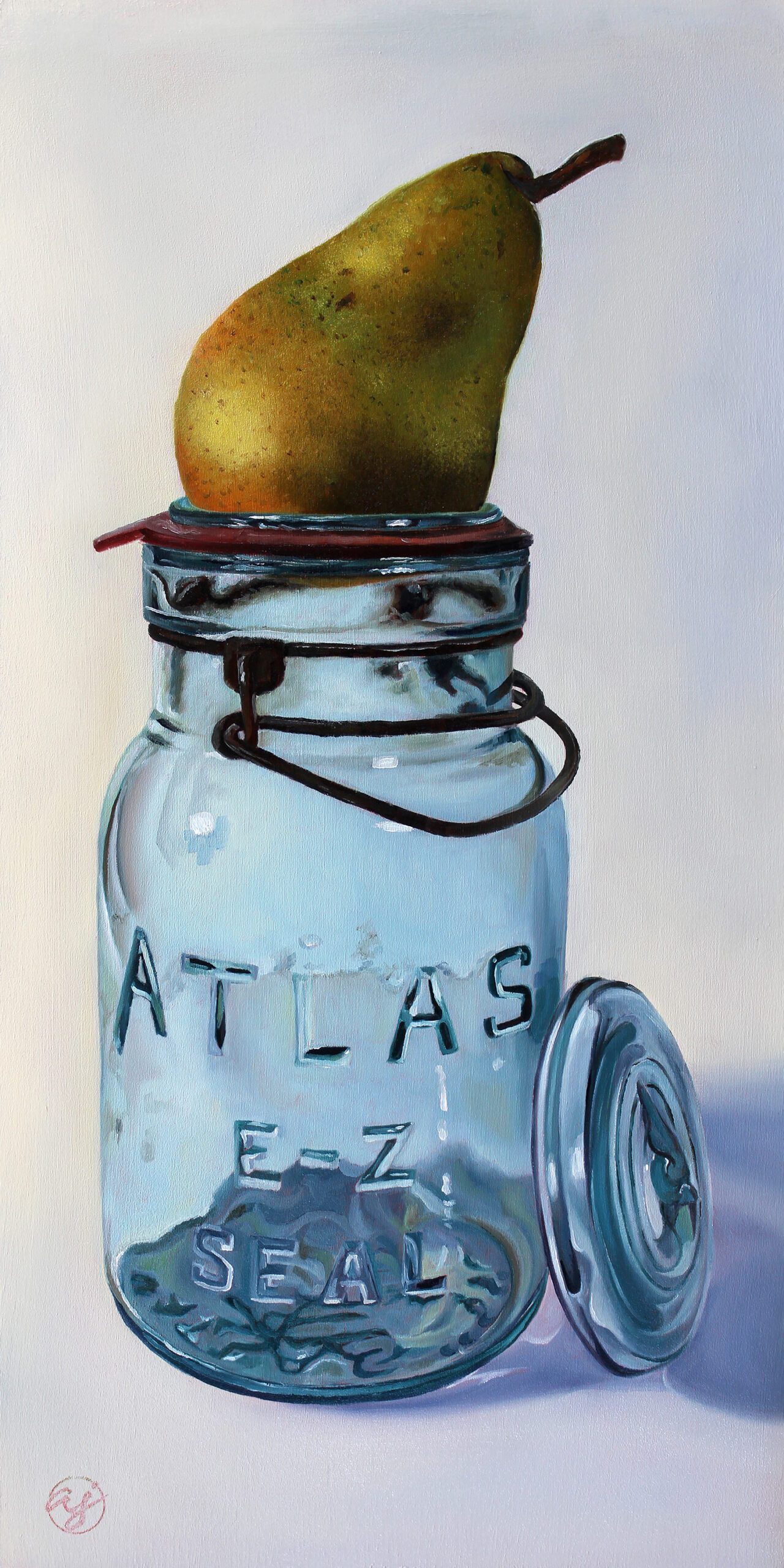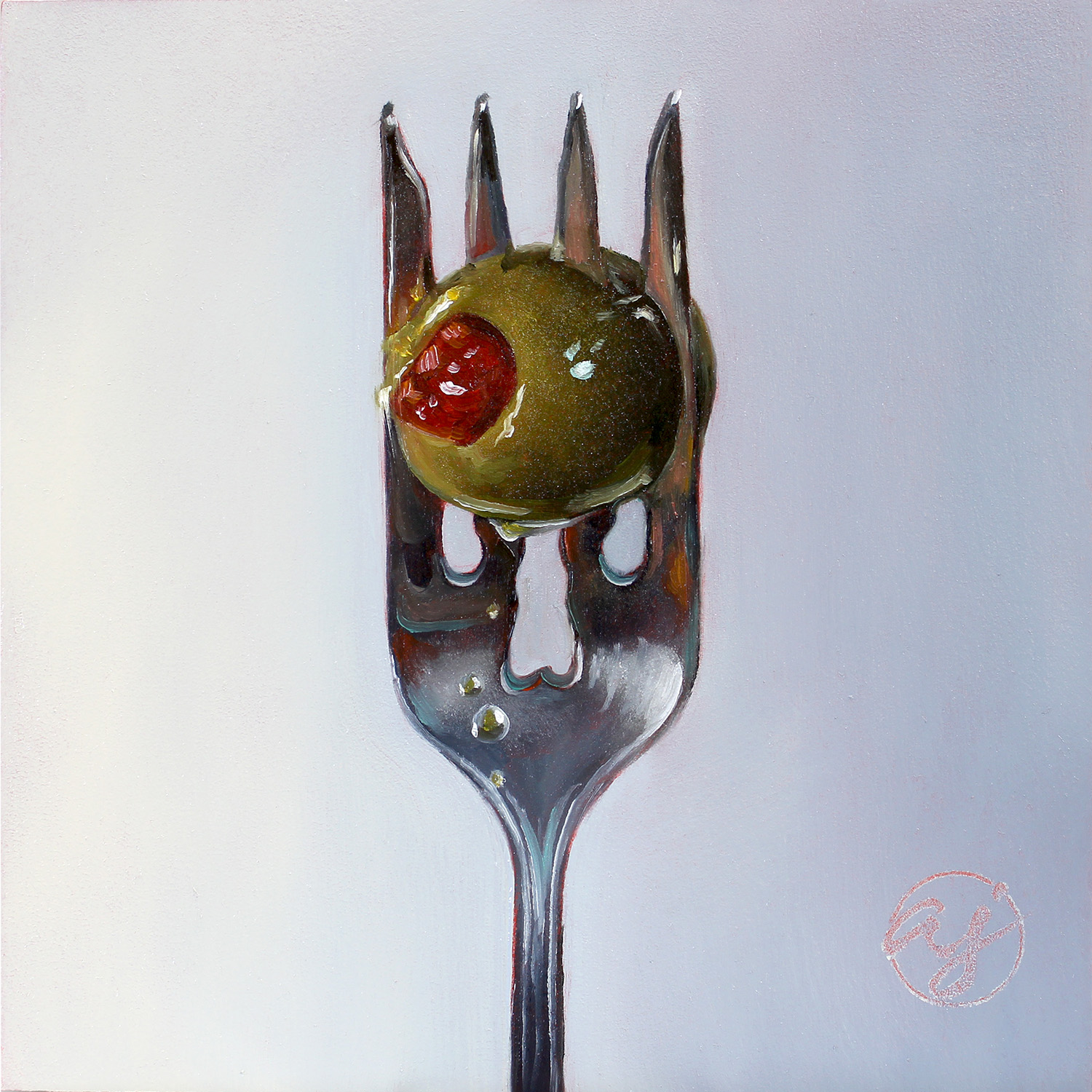About

Hello
My name is Abra.
Abra Johnson lives in Atlanta, Georgia, and after a long career in Graphic Design, picked up painting. She practices Encaustic as well as traditional Oil Painting – focusing more on Oils. She has a BFA as well as a minor in art history, which sparked her interest with encaustic, as it’s one of the oldest painting methods. Her favorite art is the style used by Flemish painters, and the Byzantine encaustics of Egypt and Rome.
Her favorite subjects to paint are food, horses and still life (particularly antique jars and vintage items), but she also paints many other subject matters and doesn’t limit herself to just one.
She focuses on realism, a fine line between photorealistic and loose realism, maintaining brushstrokes when viewed closely. She loves the challenge of creating realistic values, shadows and depth, loving glass and transparent items most.

Hello
My name is Abra.
Abra Johnson lives in Atlanta, Georgia, and after a long and successful career in Graphic Design, picked up painting. She practices Encaustic as well as traditional Oil Painting – focusing more on Oils. She has a BFA as well as a minor in art history, which sparked her interest with encaustic, as it’s one of the oldest painting methods. Her favorite art is the style used by Flemish painters, and the Byzantine encaustics of Egypt and Rome.
Her favorite subjects to paint are food, horses and still life (particularly antique jars and vintage items), but she also paints many other subject matters and doesn’t limit herself to just one.
She focuses on realism, a fine line between photorealistic and loose realism, maintaining brushstrokes when viewed closely. She loves the challenge of creating realistic values, shadows and depth, loving glass and transparent items most.
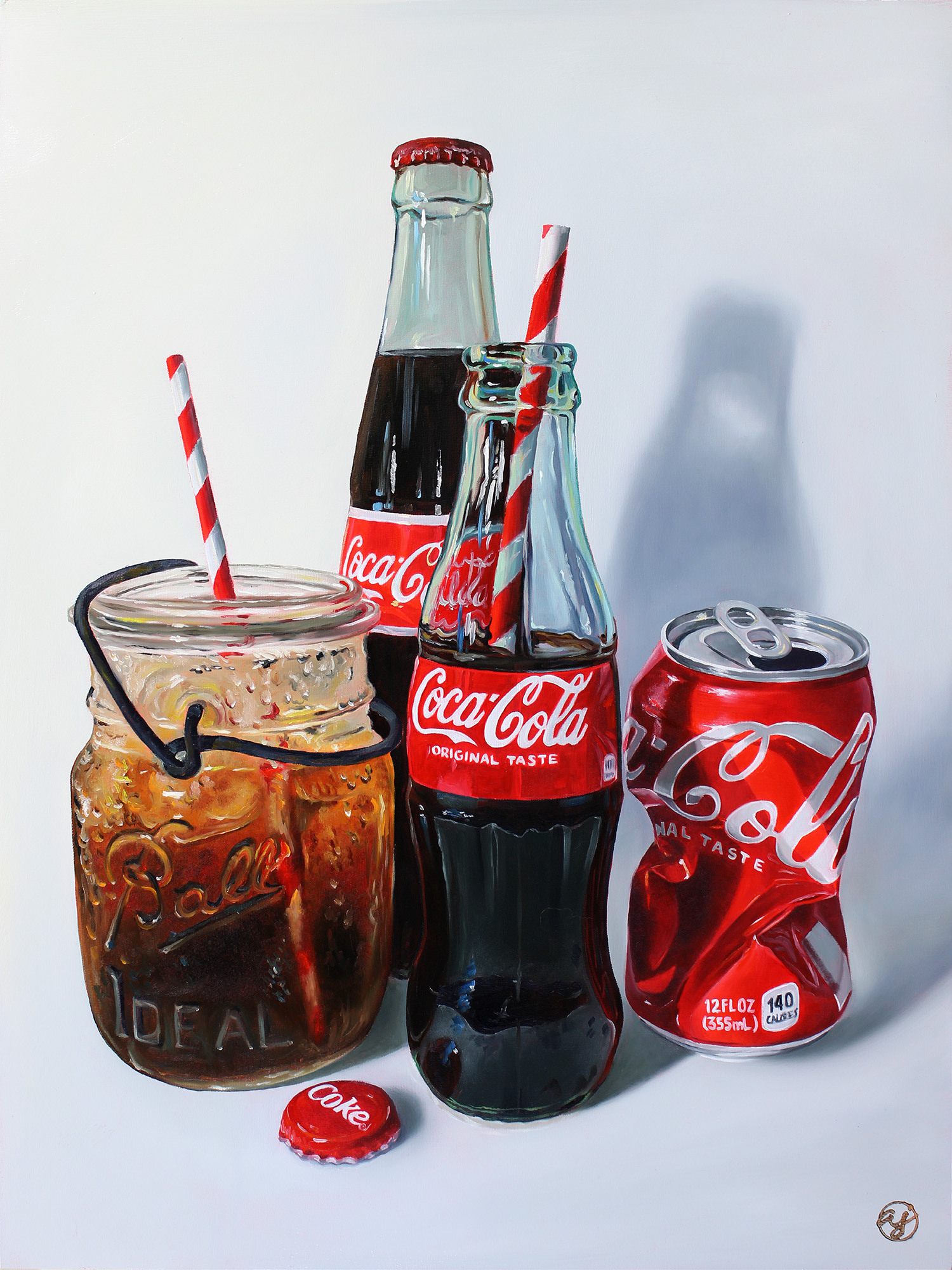
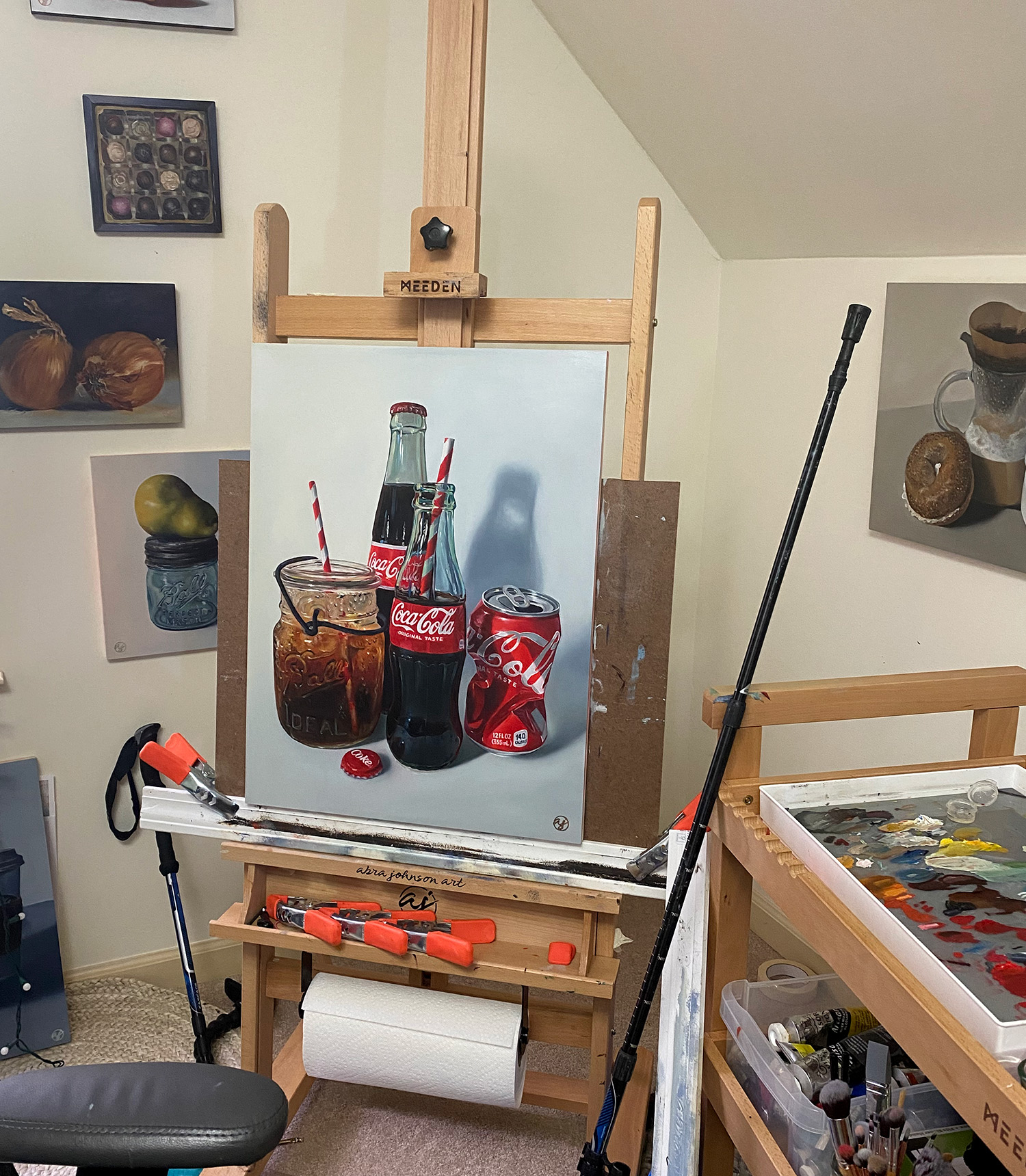
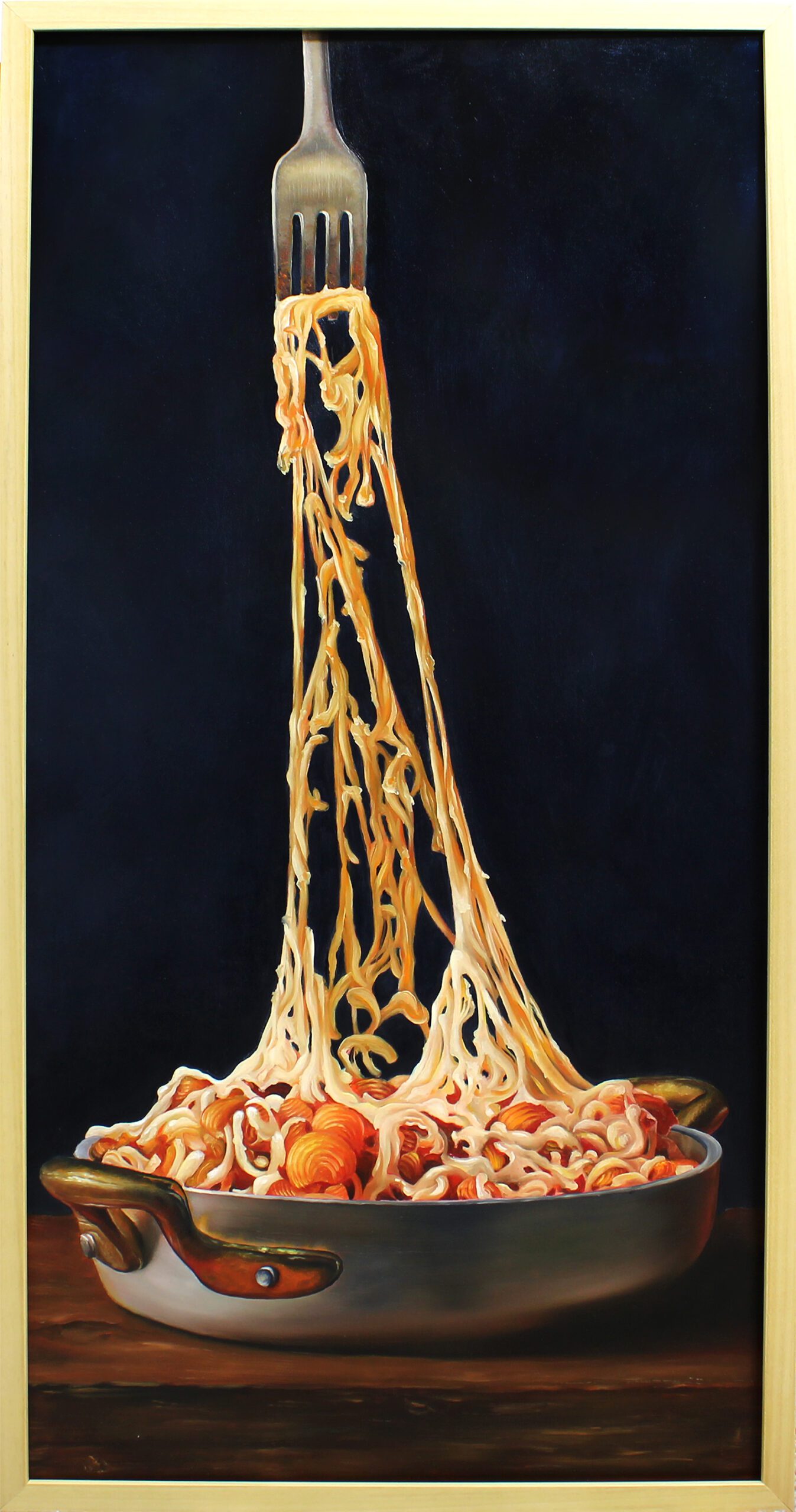
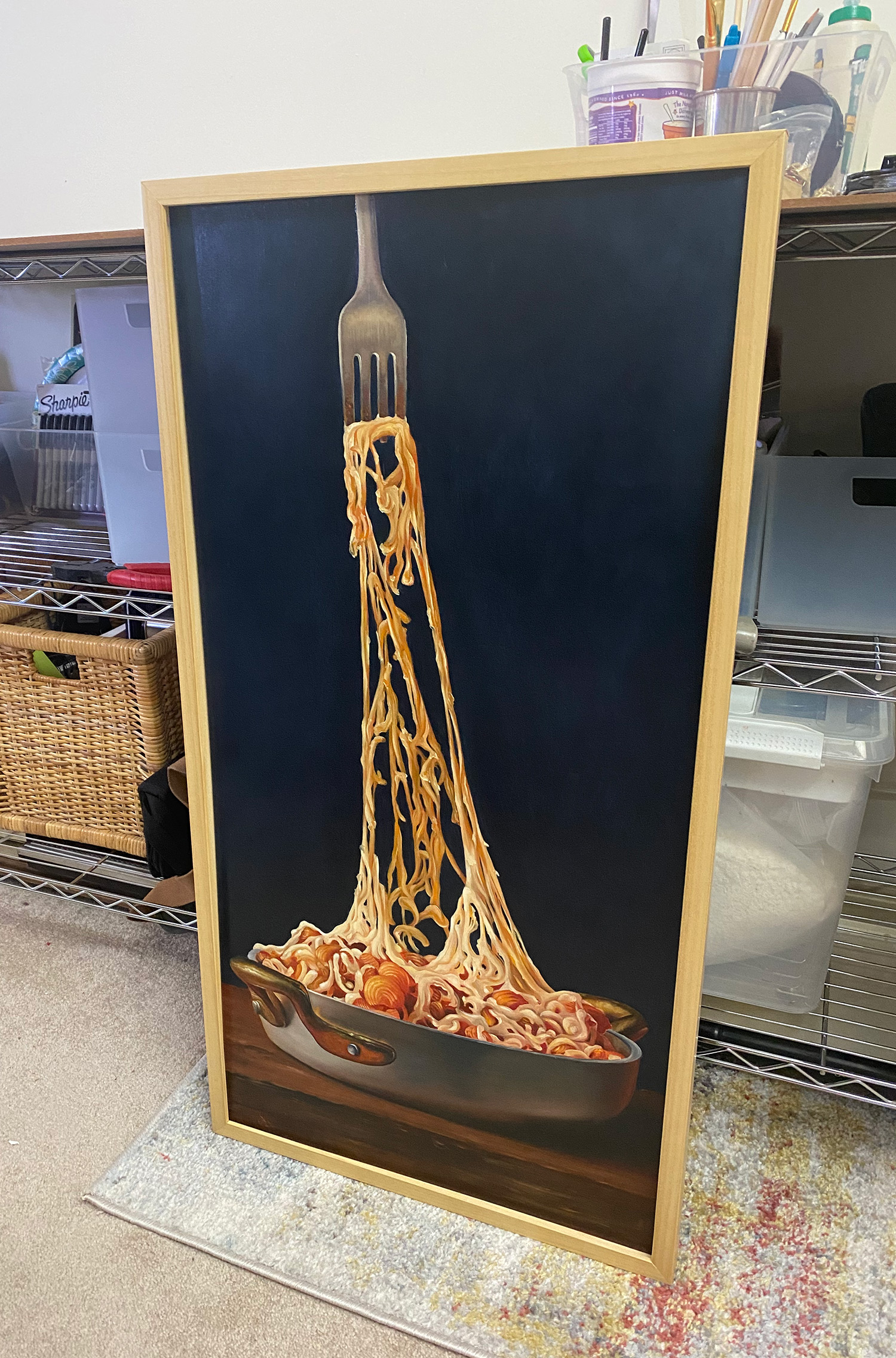
Artist
Statement
Artist Statement
I started working with oils after I’d been an encaustic artist for many years. As an encaustic artist I am always pushing the medium to work like oils, so my transition to oils was very easy and seamless.
I work in a style of direct and indirect oil painting, both layering parts slowly over time, as well finishing some areas of my artworks in one sitting.
I most enjoy painting as precisely as I can. I struggle with anxiety and OCD, and this is how I exercise my frustrations and forget where and what I’m dealing with for a short period of time. If I’m hyper-focused in the moment, I’m happy. I paint mostly from my own still life set up and enjoy the challenge of collecting and building the individual pieces of it. While I enjoy realism, I still want my painitings to look like paintings, so I don’t over-stress every brushstroke.
Food is my main subject matter, incorporating reflective objects to give it exciting juxtaposition and light. I love vintage jars and they show up the most in my art. I have an extensive collection from years of collecting.
Education
Washington State University 2002-2006
BFA, Minor in Art History, graduated Cum Laude
- Drawing
- Painting
- Ceramics
- Graphic Arts
- Photography
Queensland College of Art 2005 – Australia
Additional studies in animation, graphics, and design
Experience
Fine Artist
Oils and Encaustic 2015-2024I am primarily an online artist and have had a lot of success there, so I’ve never really gone further than that or needed to unless I find the right Gallery that I feel fits me. I sell my art primarily via my website, and eBay. I also make and sell Encaustic paints via Etsy.
I have participated in some shows in the Seattle area in 2015, successfully selling the art accepted there every time. I have not shown in the Atlanta area yet.
Tommy Bahama
Creative Director 2019-2022Label design of their Liquor brand and marketing and creative management of the line.
www.tommybahamaspirits.com
Giant Marketing
Graphic Design 2015-2024Primarily working with 100’s of Anytime Fitness clubs and marketing.
Social
Instagram
Facebook
